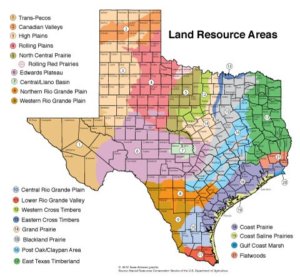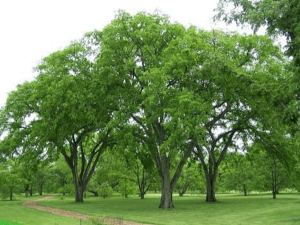A Sustainable Landscape
September marks the beginning of fall gardening here in Central Texas, especially for those native plant species. Early fall is also the perfect time to plant those shady native trees. Native plants can thrive without constant care, attention, and water, which is extremely important in times of drought. Native plants are a greater wildlife value, providing food and habitat. Growing native in your garden or yard will help you save money, time, and the most important natural resource, water.
You can still have a colorful garden.
Central Texas has a variety of beautiful colorful perennials, shrubs, and roses. These native flowers attract natural pollinators which are vital to the environment. It’s the perfect time of year to start planting Wildflower seeds! They germinate in the fall, develop throughout winter and bloom early spring. (Wildflowers do need moist soil to germinate but avoid over watering because they do not like saturated soils.) You can also plant some cool season annuals and vegetables to have throughout our mild fall.
Considerations for Native Trees

Although native trees require less attention, it’s still important to consider the preparation. Think about what kind of soil you have in your landscape. Is it rocky? Does it have poor draining conditions? Does it retain water long enough? Here in Williamson County, we are divided between two major soil zones: Backland Prairie and Edwards Plateau.
The Western side of Williamson County is in the Edwards Plateau zone. Soils are rocky and gravelly because it is underlined by limestone. This soil doesn’t hold water well, has high alkalinity and sometimes a low nutrient content. Consider planting Cedar Elm which can withstand poor soil, or Lacey Oak which can grow on shallow limestone soils. Texas Red Oaks are well adapted to rocky soils, and Bigtooth Maples thrive in alkaline soils. These trees can be watered every 3-4 weeks once well established.
Over to the East, we have Backland Prairie soils. This zone has darker, deep, and clay soils. This rich fertile soil is great for planting Eastern Red Cedar, which needs deep soil to grow. Chinquapin Oak, Bur Oak, and Pecan all need dark and deep soils to grow their extensive root system. These trees can be watered every two to three weeks once well established.
A Self-Sufficient Landscape
The most important thing to a native landscape is to be self-sufficient. Ever wonder how that giant Oak tree by your neighborhood got so big without anyone taking care of it? Native plants and trees are adapted to our climate, weather conditions, and soils. I’m not saying you should completely ignore your native plants but let them do their own thing and grow how nature intended them to.
Here’s two great searchable sources of native plants:


